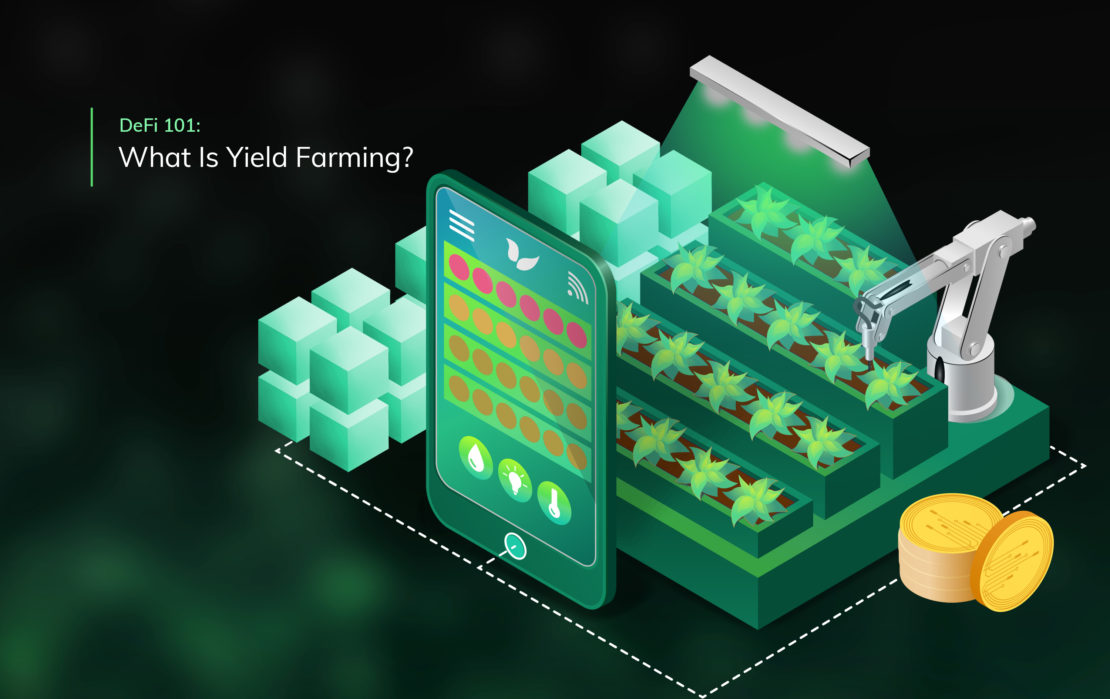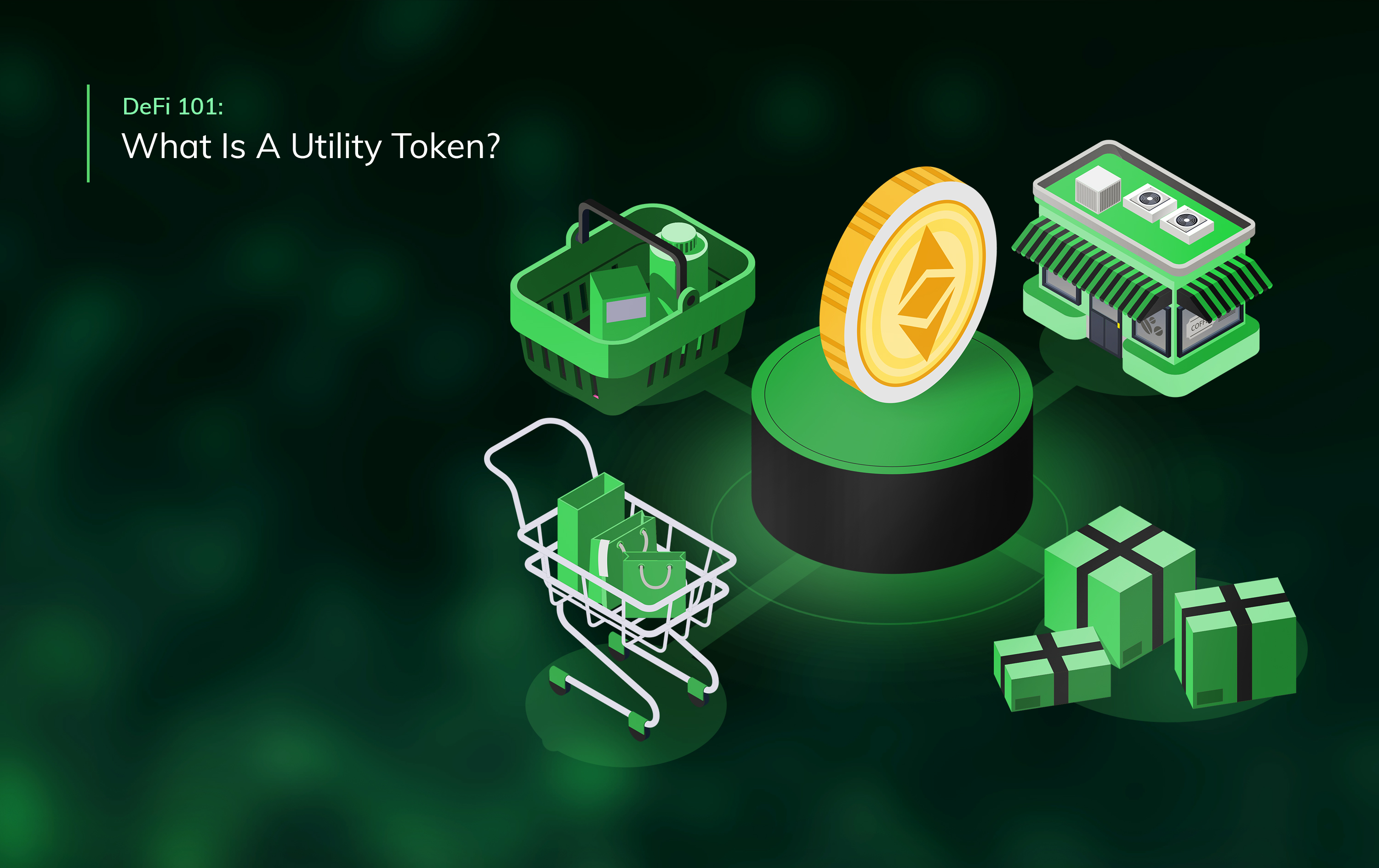DeFi 101: What Is Yield Farming?
Yield farming uses decentralised finance (DeFi) to maximise the return on your digital assets. You lend or borrow tokens on a decentralised application (dApp) and earn tokens in return.
——
The middle of 2020 was massive for decentralised finance (DeFi).
An entire ecosystem of applications emerged from a long, cold crypto winter, ringing in a period now known as ‘DeFi summer.’
Between June 2020 and May 2021, investors locked some $100 billion in a raft of new DeFi platforms, looking to boost the return on their digital assets using a novel technique called yield farming.
Yield farming is simply a way for token holders to generate the maximum rewards using decentralised applications (dApps). And it typically involves providing liquidity to platforms like decentralised exchanges.
The most popular yield farming apps include Aave, Curve Finance, and Uniswap, each with several billion dollars in locked assets.
We’ll run through them shortly, but let’s start by exploring how yield farming works.
How does yield farming work?
Yield farming lets investors earn yield by depositing tokens into dApps like decentralised exchanges and lending platforms.
The platforms use this liquidity to power their services. And they pay the liquidity providers a fee in return. The process works thanks to smart contracts: lines of computer code that automate agreements between parties.
But the precise mechanics depend on the type of platform used:
Decentralised Exchanges
Decentralised exchanges (DEx) need liquidity to work. They source it from users like you and me, incentivising us with the promise of attractive fees.
Suppose you decide to generate a yield from a DEx. You’ll first need to deposit two coins — the trading pair — into a liquidity pool. The DEx will then pay you a percentage of the fees it generates from its users’ trading activity.
Lending Platforms
Crypto lending platforms let users lend and borrow digital assets. On the one hand, you can lend your tokens to other users and earn a yield on said loan.
On the other, you can use your holdings in one token to secure a collateralised loan in another token, earning additional yield on your borrowings. Yield farmers love this dynamic as they get to keep their original holdings, which could appreciate in value.
In tandem, they earn a yield on their loaned coins.
Crypto Staking Platforms
The term ‘staking’ is popular in crypto but can mean two slightly different things. Proof of Stake (PoS) blockchains like Ethereum use stalking to offer users a reward for pledging tokens to secure their networks.
Platforms like decentralised exchanges and some blockchains allow you to stake liquidity provider tokens or native tokens, offering you a yield if you do.
— —
These are the three most popular forms of yield farming, but which are the most popular yield farming protocols?
Let’s check out some of the best-known below.
Most popular yield farming protocols
DeFiLlama is an excellent website for tracking popular yield farming protocols.
It uses graphs to show how much money is locked in each one, with three applications tending to dominate: Aave, Curve, and Uniswap.
Let’s look at each one.
Aave
Aave is a hugely popular stablecoin yield farming platform. The app also has a native token (symbol: Aave), used to attract network participants by offering incentives like lower fees and platform governance votes.
Curve Finance
Curve ranks as one of the biggest DeFi platforms, with billions locked in its liquidity pools. Its unique automated market maker (AMM) offers several yield-generating mechanisms, making it particularly popular amongst more sophisticated yield farmers.
Curve’s extensive list of stablecoin offerings also attracts a broad user base, with the pools considered some of the most reliable in the DeFi ecosystem. Curve also has a token (symbol: CRV) used primarily for platform governance.
Uniswap
Uniswap is one of the biggest decentralised exchanges.
The platform gets liquidity providers to deposit tokens in pairs, which creates liquidity pools for traders to use to swap cryptocurrencies. Liquidity providers earn a percentage of the fees associated with their pool.
And as one of the earliest dApps, Uniswap has become one of the most popular.
Yield farming returns (APY)
Returns vary across platforms, with most apps reporting it as annual percentage yield (APY).
The APY reflects the expected returns over a year, assuming you compound your rewards (so you reinvest gains to generate a higher return).
One important note is that APYs are always an estimate. That’s because the yield fluctuates according to supply and demand. Moreover, when one platform’s yield is exceptionally high, yield farmers will flock to it.
The influx of users will bring the APY down, so it won’t last long (which is also why more active yield farmers frequently move funds in search of the highest yield).
The challenge is that yield farming isn’t without risk, as we’ll show you now.
Three biggest risks of yield farming
Yield farming is an attractive way to juice the returns on cryptocurrency investments. But it’s crucial you understand the risks involved.
Market volatility can put you at risk of liquidation (as happened in May 2022, when a sudden price collapse caught out leveraged funds). And security risks can lead to hacks and scams that destroy positions.
Below are the three most common yield farming risks:
1. Volatility
Cryptocurrency is wildly volatile (as you might well know). Price swings are commonplace, and if you lock your tokens in staking, you might find it difficult to exit the position before you sustain a heavy loss.
2. Smart contract hacks
Cryptocurrencies are also prone to hacks. This is especially true in DeFi, where smart contracts underpin each application. More established platforms are at a lower risk of a breach, but that’s not to say any platform is immune to the threat.
3. Regulatory Concerns
The regulators are coming for crypto, yet we still don’t have absolute clarity over the rules. The risk is that some tokens will be classified as securities, resulting in price collapses or an inability to swap your tokens.
Yield farming made simple
Yield farming is an incredible innovation.
You can generate APY on your digital assets with little more than an internet connection, but there’s one big problem.
Most yield farming platforms are almost impossible to use. First up, you have to create a crypto wallet to access them; then, you need to buy several cryptocurrencies before you can earn a return.
This is why we built Elitium. Our platform removes the complexity of yield farming, leaving you with an incredibly simple, entirely secure way to generate a yield.
Interested to learn more? Drop the team a message today.




